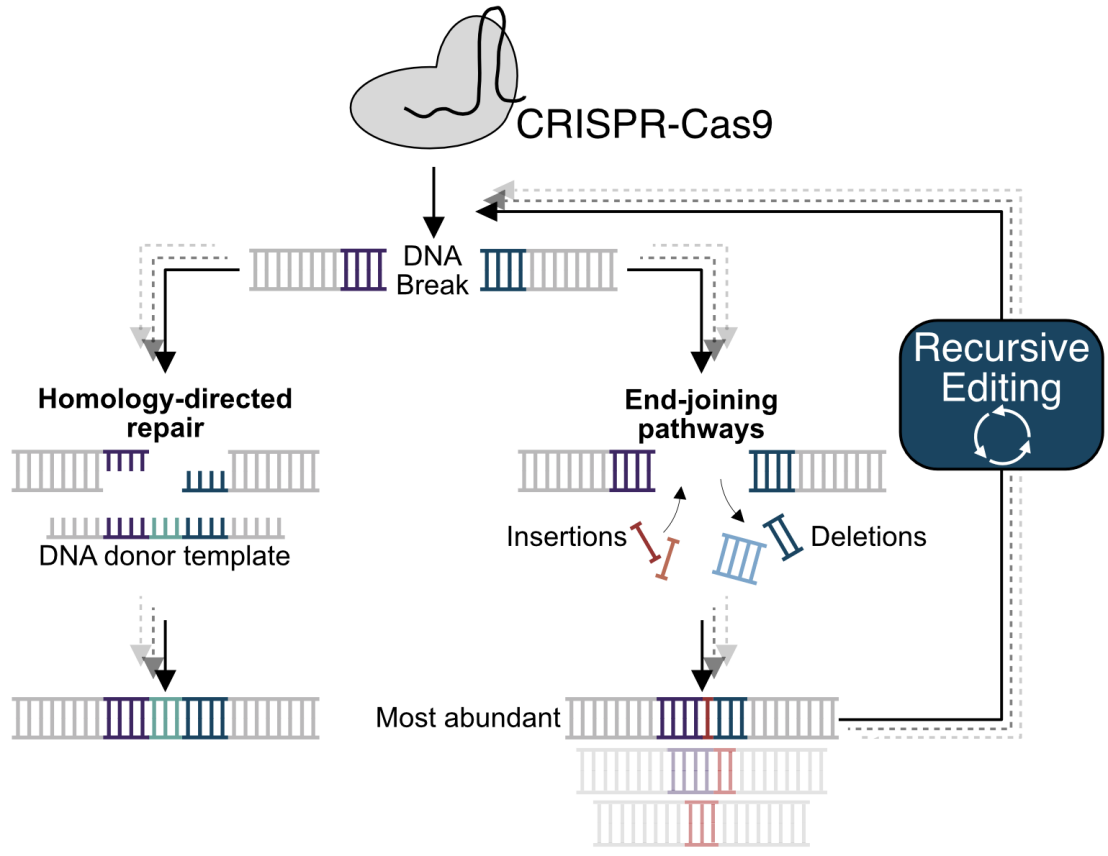Enhancing precise genome editing efficacy by retargeting undesired outcomes
Genome editing can impart precise modifications to DNA to revert pathogenic mutations or insert novel sequences. However, undesired edits are frequently produced. The Corn group (IMHS) has developed a new approach to increase the abundance of desired outcomes while depleting editing byproducts.

Genome editors such as CRISPR-Cas9 enable the installation of a broad range of precise genomic modifications encoded on supplied donor templates. The cell incorporates these changes, ranging from single base edits to gene-sized insertions, through a DNA repair pathway called homology-directed repair (HDR). However, HDR in human cells is often hampered by poor efficiency, stemming from a preference for error-prone end joining pathways that yield undesired edits. Thus, developing approaches to enhance HDR has been an ongoing focus in the genome editing field.
In this study, the Corn group (IMHS) developed Recursive Editing, an HDR improvement strategy that selectively retargets undesired editing outcomes. The key to implementing this approach is a software tool, named REtarget, that predicts optimal Recursive Editing sites in a region of interest. Target sites that are predicted to produce singularly abundant undesired outcomes are ideal candidates for Recursive Editing.
Harnessing the power of REtarget, the study shows marked improvements of HDR and a reduction in undesired outcomes across the 20+ sites tested. The enhancements are seen in diverse cell types and with varied types of precise modifications. In contrast to other strategies, Recursive Editing does not rely on cell state manipulations or small molecule drugs. Overall, Recursive Editing could be a useful and effective tool for increasing the efficacy of gene modification in both research and clinical settings.
Link to the paper in "external page Nature Communications"
Link to external page REtarget software